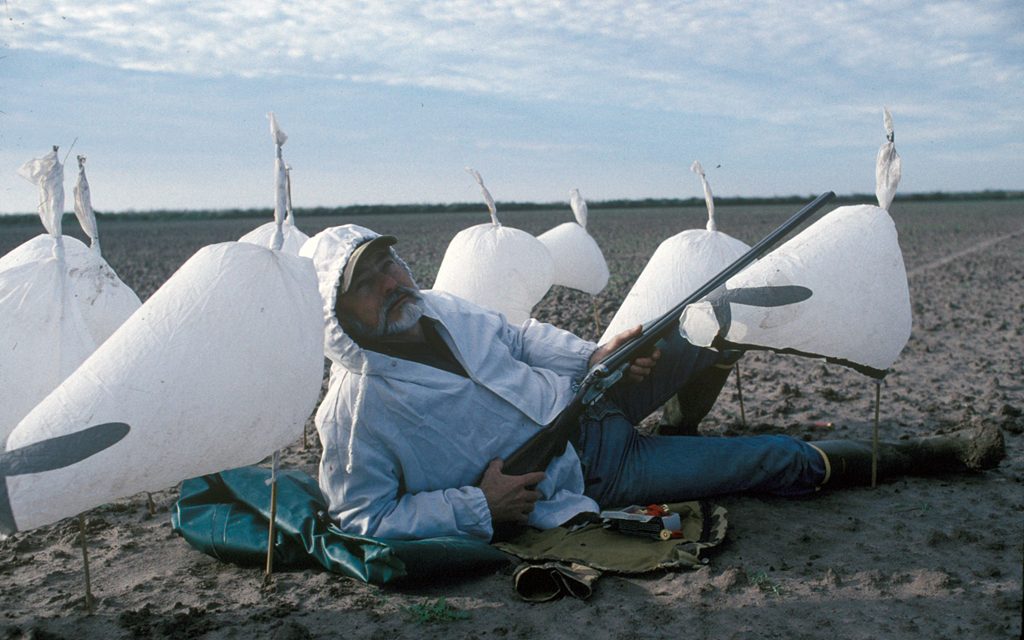by John Jefferson
No, this isn’t a cooking column. Although that combination just might make one heckuv an omelet!
I’ll begin with geese and cover oysters further down.
In the late 1990’s, we began hearing about overpopulation of light geese (snow and Ross’ geese) in the arctic breeding grounds.
According to a U.S. Fish and Wildlife Service (U.S.F.W.S.) release dated 2-12-99, the population rose from 800,00 in the ‘60s to three – five million in the ‘90s. It was out of control. With overpopulation, habitat began to suffer. Biologists surveyed 1,200 acres and found 35% destroyed, 30% severely damaged and 35% overgrazed.
One picture I recall showed a large tract with a small enclosure fenced to protect it from geese. The fenced-in area was green and lush; everything outside it was barren ground. It was happening throughout the breeding grounds.
It got worse. In 1999, U.S.F.W.S. issued new goose hunting rules. Beginning right after the regular waterfowl seasons closed, a “conservation order” season was established with NO BAG LIMIT for light geese, permitting use of electronic callers and allowing unplugged shotguns.
Goose hunting, already popular, became more so. It was exciting lying in the darkness and hearing multitudes of geese take flight from the roost. It happened all over the rice and soybean belt, wherever geese occurred.
A few years ago, the flights to Texas began declining. Drought deprived rice farmers of water and some quit farming. Without rice, geese became rarer. This past fall, warm weather kept northern ponds ice-free later than usual. Geese stayed home longer, delaying migration. Some never arrived here.
I talked to veteran waterfowl guide, Will Beaty, in Winnie. Beaty and I are sort of in-laws; his famous retriever, the late “Buck”, sired a litter with one of our Lab puppies, and we got a pup out of it. “Pilo” became my favorite hunting companion for 14 years. Buck lived to hunt for 18 years. Will and I both still grieve.
Will says few juvenile birds were in the flocks this year, and there were smaller concentrations. Older birds are harder to bring down. Maturity makes them warier. There was fair hunting in November, but overall it was “spotty”. Rice farming practices and weather have interfered. He says as the coastal country is already beginning to green up, the geese may have taken that as a sign to begin migrating back to the north.
Consequently, he isn’t booking “conservation hunts” unless geese move back in. The Conservation Order season is open in both zones until March 17 – if there ARE any snows.
This past January, the Texas Parks and Wildlife Commission heard a staff proposal to reduce the light geese regular season bag limit next season from 20 to 10/day in both goose zones and opening and closing their seasons a little later. Final vote will occur March 26.
Oysters: Overharvesting has caused concern. State Rep. John Cyrier will conduct a public hearing in Victoria at the Victoria College Emerging Technology Complex at 1:00 p.m. on 2-20-20.
JJ





